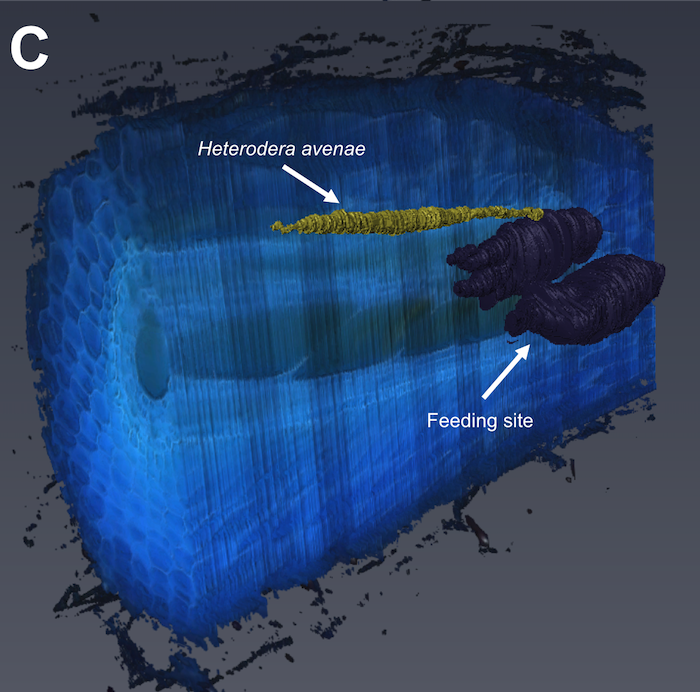
Nematode feeding on barley root as visualized by LAT
Authors
Levin KA, MR Tucker, CF Strock, JP Lynch, DE Mather
Source
Plant Cell Reports 2021 40:393-403 https://doi.org/10.1007/s00299-020-02641-w
Abstract
Cyst nematodes develop syncytial feeding sites within the roots of their host plants. The success of these feeding sites is important for nematode development, but the factors affecting this success are not well understood. One of these factors is the resistance of the host plant. In wheat (Triticum aestivum L.), 'Cre' loci affect resistance against the cereal cyst nematode (CCN) Heterodera avenae. To investigate how one of these loci (Cre8, on chromosome 6B) effects CCN resistance, CCN-infected root tissue from susceptible (-Cre8) and resistant (+Cre8) wheat plants was examined using confocal microscopy and laser ablation tomography. Confocal analysis of transverse sections showed that feeding sites in the roots of -Cre8 plants were always adjacent to metaxylem vessels, contained many intricate 'web-like' cell walls, and sometimes 'invaded' metaxylem vessels. In contrast, feeding sites in the roots of +Cre8 plants were usually not directly adjacent to metaxylem vessels, had few inner cell walls and did not 'invade' metaxylem vessels. Models based on data from laser ablation tomography confirmed these observations. Confocal analysis of longitudinal sections revealed that CCN-induced xylem modification that had previously been reported for susceptible (-Cre8) wheat plants is less extreme in resistant (+Cre8) plants. Application of a lignin-specific stain revealed that secondary thickening around xylem vessels in CCN-infected roots was greater in +Cre8 plants than in -Cre8 plants. Collectively, these results indicate that Cre8 resistance in wheat could act by preventing cyst nematode feeding sites from reaching and invading root metaxylem vessels.

